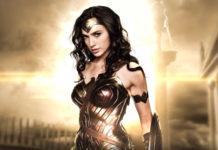
Credits: NASA
One can view Jupiter all night long. On April 7, it reaches opposition. It will shine the brightest and will appear larger than usual. The solar system is lined up so that Jupiter, Earth and the sun form a straight line, with Earth in the middle. Jupiter, the king of planets, will also appear highest overhead at midnight.

Credits :NASA

Credits : NASA
The Summer Triangle is made of the three bright stars. Deneb in Cygnus, the Swan, Altair in Aquila, the Eagle, and Vega in Lyra, the Lyre or harp will form this triangle. The star-gazers can also spot Vega and Lyra high in the eastern sky, few hours after midnight this month.

Credits: NASA-JPL
April also has a special visit from celestial bodies. This year’s second major meteor shower will radiate through the Summer Triangle. The meteor shower, the Lyrids or the April Lyrids generally last from April 16 to April 26, each year.
Alike every year, it peaks this month, in the morning hours of April 22. For all the keen and also patient observers, a great feast awaits. Around 18 meteors per hour will shower before dawn from a dark sky location.

Credits : NASA-JPL

























